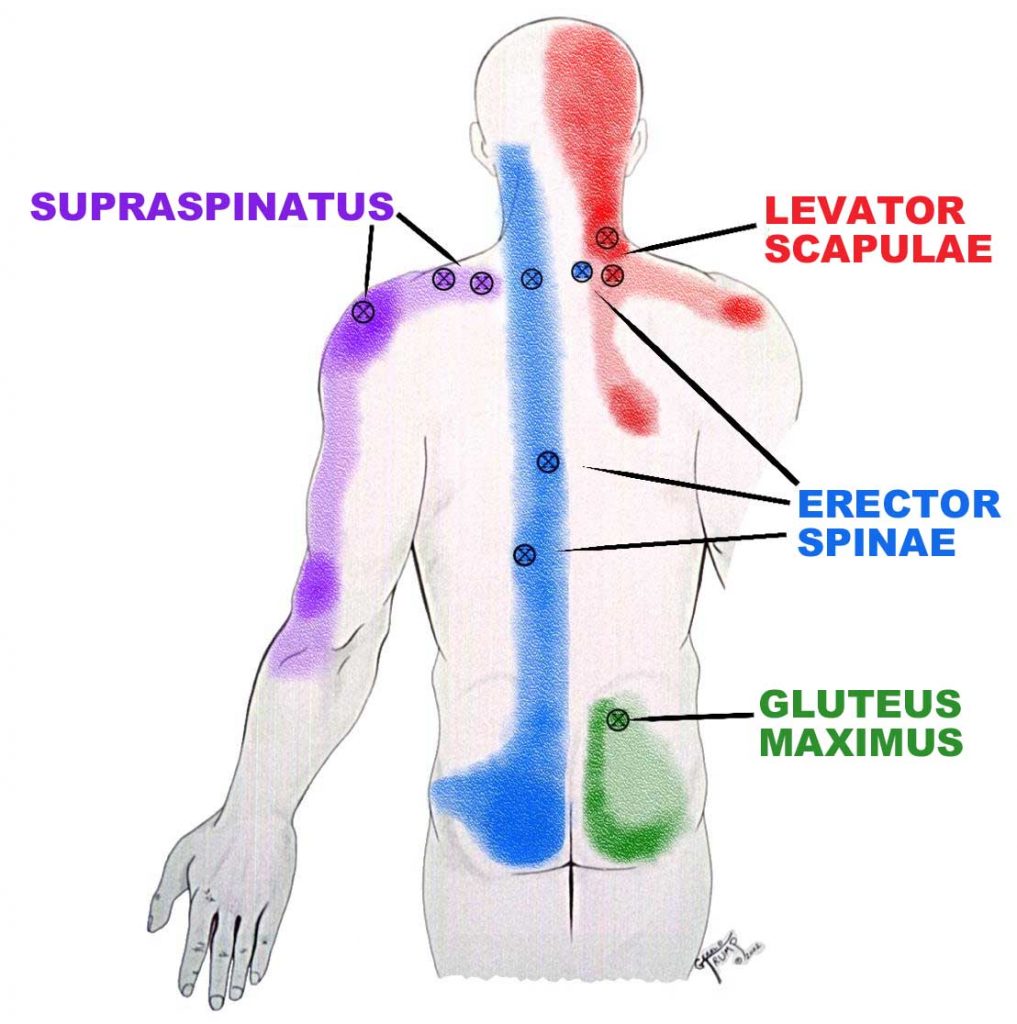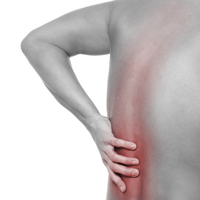What causes back pain? The majority of time the answer is MUSCLES! Yet muscles are rarely considered when searching for the solution to your pain, whether it’s in your back, or any other part of your body.
This is a major oversight! It is the reason millions of people are suffering not only from back pain, but from joint pain throughout the body, without finding relief that is easily attainable when muscle tension is released.
Your back is a symphony of overlapping interconnected, groups of muscles, tendons, and nerves. Each muscle merges into a tendon, which then crosses over a joint and inserts into a bone. When the muscle contracts it will pull on the tendon and the joint moves. Back pain is commonly caused by repetitively straining the muscles that insert into the vertebrae and ribs.
Your Spine:
Your spine has 7 cervical vertebrae, 12 thoracic vertebrae, and 5 lumbar vertebrae, each separated by a gelatinous disk that acts as a cushion to separate the bones and protect them from wear.
Muscles span your entire spine and are responsible for every movement you make.
- Muscles originate on the vertebrae and connect each vertebra to the next,
- Muscles originate on the ribs and insert into the vertebrae in order to move your spine in the infinite number of angles you can make with the trunk of your body,
- Muscles originate on your vertebrae and insert into moveable bones such as your shoulder blade and hip, enabling the bone to move so your shoulder and leg can move.
In order to move your body a muscle contracts and your joint/limb moves in the direction of the pull. In order to move in the opposite direction, the contracted muscle needs to relax to remove the strain from the bone, and the muscle on the opposite side contracts to pull the bone in the opposite direction.
If the muscle that needs to release is in a spasm it can’t relax. Spasms are knots of muscle fibers that refer pain to areas that may be a distance from the actual spasm. If one muscle has a spasm that won’t release, and the opposing muscle is contracting, you have muscles pulling in two opposite directions.
One muscle (psoas) originates on the front of your lumbar vertebrae and pulls your body forward so you can touch your toes, while the quadratus lumborum, along with the erector spinae group of muscles, originates on the back (posterior) side of your lumbar vertebrae and pulls you back or to the side. When one of these muscles, for example your psoas, is in spasm it is pulling your lumbar forward and down, and if you try to stand up straight you have back pain.
Repetitive movement, which is also called repetitive strain injury (RSI), will cause spasms to form in the muscle fibers. Treating the spasms works, and a side benefit is that many times, when you are treating a muscle for one thing, you are also treating the source of a totally different problem.

Notice on this graphic that the spasms (blue colored circles) of the Erector Spinae muscle, will refer pain (blue shaded area) from the skull to the buttocks. While the spasms (red colored circles) of the Levator Scapulae will refer pain (red shaded area) into your skull, along your entire neck, your upper back, and into your shoulder blade. The referred pain area of the two muscles are overlapping each other, and the spasms are a distance from where you are feeling the pain.
Also notice that the spasms and shaded pain area of the gluteus maximus (green) and supraspinatus (purple) overlap with the levator scapulae and supraspinatus
When you treat the knot in one of the muscles, you are simultaneously treating the knot in the other muscle.
If your muscles continue pulling on the structures of your back for an extended period of time, it can cause damage to the structures of your back, including putting pressure on your disks and potentially causing them to herniate or compress, and you will have chronic pain, which could ultimately need surgery. It’s logical to treat the tight muscles first, before they cause permanent damage.
You can self-treat your tight muscles, releasing the tension on the bones, and the pressure they are placing on the disks. Each of the books and DVDs on this website have been designed to show you how to find and treat the spasms that are causing back pain, as well as aches and pains in the other joints of your body. You can also prevent back pain by self-treating the muscles before they cause pain. It only takes a few dollars and a few minutes to release tight muscles, and the benefits are priceless!

